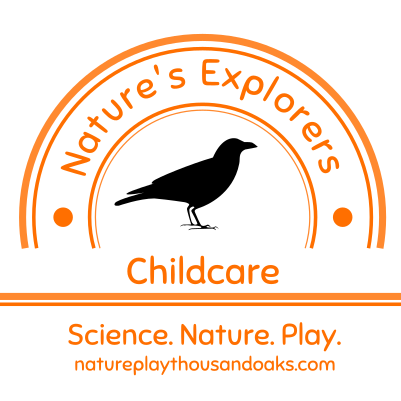We shared on our News page that we were recently selected to receive a grant from the Conejo Valley Audubon Society. The grant will be applied to adding more plants to our outdoor space that will attract and support our local birds, butterflies, and bees. Birding is a favorite daily activity here at Nature's Explorers, so we thought we would take some time to delve a bit deeper into what this means for our students and community.
When you visit a high-quality early childhood classroom, you should be able to observe a reflection of the community that shares that space - their passions and interests. Not only those of the children. You should get a sense of the caregivers and teachers as well. When you visit our space, you may notice a pair of binoculars on the windowsill. A collection of field guides. Several bird feeders. Some preserved specimens, including butterflies and bird nests. These are all items added to the classroom by Anne and Jenn that reflect our own passion for the local flora and fauna. You'll hear both adults and children talking about what species we observe and what individuals we recognize, including two of our favorite neighborhood friends: Russell and Sheryl crow. For our own interest, we maintain a list of the species of birds, butterflies, and bugs that we have spotted in our outdoor classroom. On weekends, you'll find Jenn birdwatching for fun.
We've yet to meet a child who is not interested in short observations of the birds and other wildlife that visit our outdoor space. Our two-year-olds know the names of several species including finches, crows, and doves. They know what different species may be interested in eating (the scrub jays prefer the peanuts, for example, while the finches like the seeds) and just how close we can get to them - ever so quietly - before they'll fly away. They know the sound that finches make, versus the calls of the doves or crows. In this collection of knowledge, they're fine-tuning their development of attention maintenance, memory, and listening skills! They are developing the essential qualities of empathy and perspective taking, as they try to understand why the birds may do what they do. They're developing their visual acuity as they scour the bushes for the camouflaged sparrows. These things taken in conjunction may lower their risk of ADHD and other disorders associated with the surplus of sedentary screen time the youngest generation is prone to.
In addition, our students are creating a sense of personal identity and wider community through this shared interest. They're growing to be stewards of our planet in their caring for and understanding of local wildlife. We could not be more proud of their knowledge of what they can do to support local wildlife already, like refilling our birdbath and throwing their banana peels into our compost instead of the trash. These are topics that we discuss daily as they are part of our everyday routines.
Even our infants share in these activities! Each afternoon, while the older children are napping, one of our infants loves to rest on her back on the front patio, beneath our olive tree. She turns her head as the sound of birdsong travels from one point to another. The flurry of feathers when a finch lights on a nearby bush captures her attention. We whisper, "There's the goldfinch! It's smaller than the house finch. And look at that flash of yellow." Does she understand these details? Not yet. But she certainly will in time. Her developing brain is bathed in natural stimulation and assimilation of information. She often reaches out to grasp our hands and shrieks in delight as the birds surprise her with their movements and sounds.
As the Audubon Society says, Birding's for the Kids! It's easy to get started, even if you don't know much about the birds around you yet. You'll learn!
